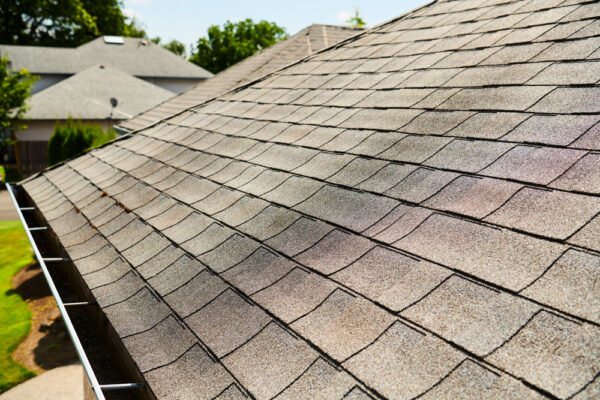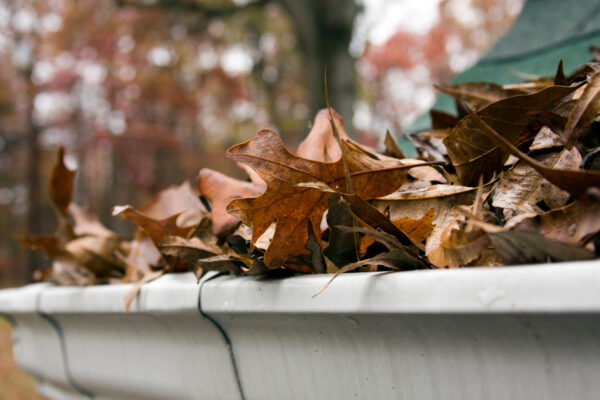
Managing Moss and Algae on the Modern Roof
To combat the growth of moss and algae on an existing asphalt shingle roof in the short term, there are a few handy solutions available. In the long term, Malarkey offers shingles with advanced 3M™ Copper Granules to resist algae growth.Moss and algae growth on asphalt shingles can be a common problem for homeowners, especially those living in damp and humid climates. If left unchecked, moss and algae can cause considerable damage to your roof, leading to leaks and other costly repairs. Having moss and algae inspected and removed from your roof by professional roofing contractors will help prevent damage and maintain the longevity of your roof overall.
Moss or Algae: What’s the difference?
“Often mistaken as mold or mildew, the black discoloration and streaks visible on many roofs across the United States and Canada are algae. The algae can form where moisture tends to dwell on roof surfaces. Coastal or humid climates create the most conducive conditions for algae growth,” according to the Asphalt Roofing Manufacturers Association (ARMA). “The algae discoloration typically begins as small spots then quickly transforms into streaks on the roof plane. By the time the algae are visible, it has been present for several months or longer.”
Moss, on the other hand, is a plant that collects water through its leaves, rather than its root system and requires a moist environment to survive. In the rainy Pacific Northwest where the Malarkey Portland, Oregon resides, moss is a common fixture. We see it primarily on north facing slopes which receive less direct sunlight and stay damp longer than the other sides of a roof.
“Overhanging tree branches provide additional shade and drop debris on the roof that further holds in moisture and acts as a food source for moss,” says ARMA. “Unlike algae, moss can cause the leading edges of shingles to lift or curl, which increases the risk of shingle blow-off during wind events.”
Prevention
First things first, let’s talk about prevention. The best way to deal with moss and algae on your roof is to prevent it from growing in the first place. Regular roof maintenance, including cleaning gutters, trimming overhanging trees, and clearing away debris such as leaves, twigs, and branches is the best way to start. Roofing contractors will often use a broom or leaf blower to clear the roof. These practices will help prevent moisture buildup on your roof and reduce the likelihood of moss and algae growth.
In coastal and damp, humid climates on roofs without algae protection, shingles can manifest black streaks in as little as three (3) years. To combat this, many Malarkey roofing shingle lines offer Algae Resistance (AR) using 3M™ Copper Granules. These granules, which blend inconspicuously into a shingle’s color, are uniformly distributed on the shingle’s surface and release copper ions which inhibit algae growth, preventing it from getting started in the first place. For maximum algae protection, our shingles featuring Scotchgard™ Protector utilize at least a 10% blend of 3M™ Copper Granules. Malarkey was the first shingle manufacturer in the U.S. to receive the Scotchgard™ Protector designation from 3M.
Why Not Just Clean the Roof?
In roofing, safety is always a priority. As a homeowner, if you are not comfortable, trained or equipped properly (sturdy ladder, non-slip shoes, fall safety harness, etc.) to be safely moving at elevation, consult with a professional roofing contractor for the job. Additionally, climbing on a roof and attempting to remove black streaks caused by algae growth via pressure washing is very slippery and dangerous. Pressure washing can also dislodge a shingle’s granules, which are their primary defense against damage and UV aging. To give you an idea of what is entailed to do the work safely, watch the This Old House video below with expert Tom Silva.
What Maintenance Options Are There for Moss and Algae on Old Asphalt Roofs?
If you are not yet ready to reroof your home with new algae resistant roofing shingles, there are some remedies (with their own pros and cons) that can limit buildup of moss and algae on the roof.
- Chemical treatment: This treatment method involves applying a specialized cleaning solution to the affected areas of the roof. The solution is designed to kill moss and algae and prevent it from growing back. While ARMA states, “the most effective method of cleaning algae and moss from a roof is with a 50:50 mix of laundry strength liquid chlorine bleach and water,” this method does come with its own unsightly downstream impacts on the local environment and watersheds.
Alternatively, there are natural compounds like white vinegar which are far less toxic on ecology and often cheaper by the gallon. For this method, home improvement expert Bob Villa recommends: “Fill a large bucket with 2 gallons of water and 1-1/2 to 3-1/2 cups of white vinegar. Pour some of this into a spray bottle and apply it to dampened roof shingles. Give it about 45 minutes to work, clean carefully with a soft brush, and rinse with clean water.”
Once you have finished scrubbing, rinse the roof with a garden hose or pressure washer set to general cleaning. Be sure to rinse thoroughly to remove all traces of the solution. Then, repeat as necessary. Depending on the severity of the moss and algae growth, you may need to repeat this process a few times to completely remove it from your roof.
- Manual removal: Manual removal involves physically scraping moss and algae off the roof with a scraper or brush. This method is labor-intensive and time-consuming but can be effective for removing small patches of moss and algae. It is important to remember that excessive walking and movement atop shingles can also dislodge their granules and prematurely age them.
- Installing zinc or copper strips: Having these on the roof can also prevent moss and algae growth by also releasing metal ions (like 3M™ Copper Granules) that inhibit their growth. These are best installed when getting a new roof.
With a little bit of elbow grease and some common household items, you can remove moss and algae from your asphalt shingles and maintain your existing roof. However, it is helpful to keep in mind, especially if you live in a damp and humid climate, that some shingles are specifically designed for algae resistance and help prevent algae buildup on the roof. Finally, always prioritize safety when working on a roof, and in most cases, it is highly recommended to simply call a professional roofing contractor.

